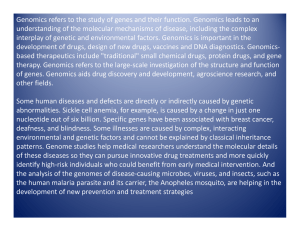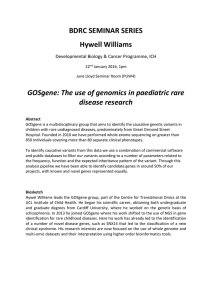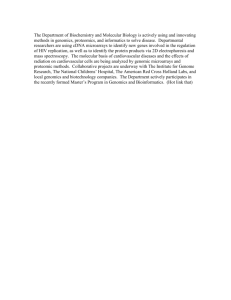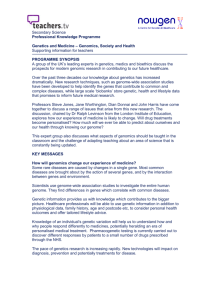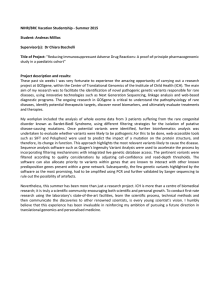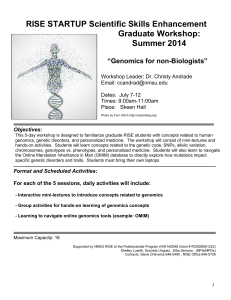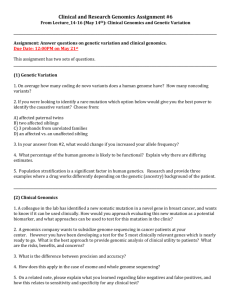Networks of Genes, Epistasis and a Functionally
advertisement
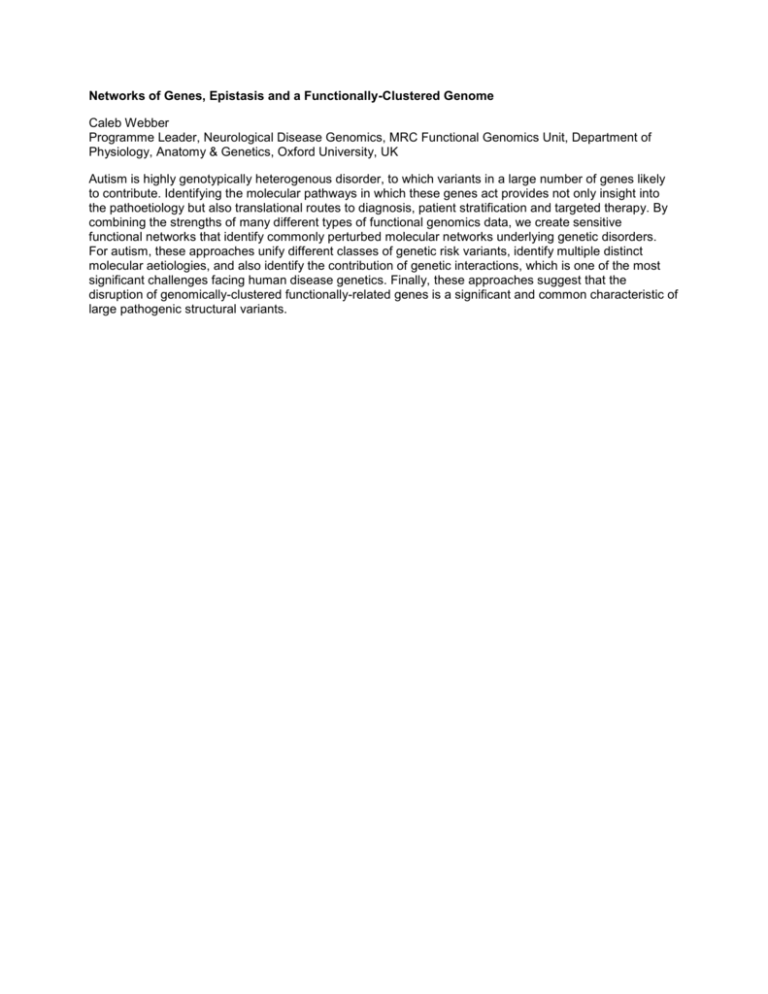
Networks of Genes, Epistasis and a Functionally-Clustered Genome Caleb Webber Programme Leader, Neurological Disease Genomics, MRC Functional Genomics Unit, Department of Physiology, Anatomy & Genetics, Oxford University, UK Autism is highly genotypically heterogenous disorder, to which variants in a large number of genes likely to contribute. Identifying the molecular pathways in which these genes act provides not only insight into the pathoetiology but also translational routes to diagnosis, patient stratification and targeted therapy. By combining the strengths of many different types of functional genomics data, we create sensitive functional networks that identify commonly perturbed molecular networks underlying genetic disorders. For autism, these approaches unify different classes of genetic risk variants, identify multiple distinct molecular aetiologies, and also identify the contribution of genetic interactions, which is one of the most significant challenges facing human disease genetics. Finally, these approaches suggest that the disruption of genomically-clustered functionally-related genes is a significant and common characteristic of large pathogenic structural variants.
